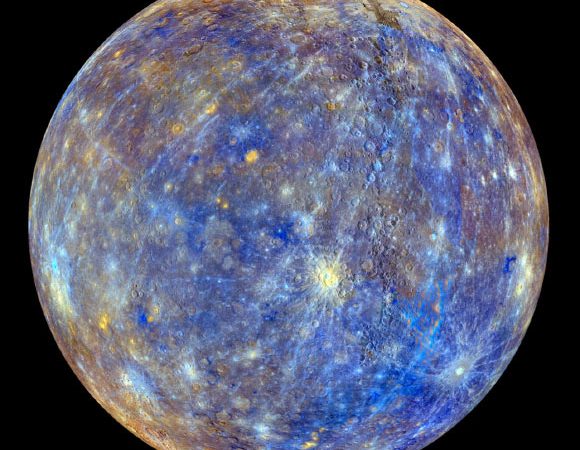Planetary researchers have long known that Earth and Mercury have metallic cores. Mercury’s core fills nearly 85% of the volume of the planet — huge compared to the other rocky planets in the Solar System. Like Earth, Mercury’s outer core is composed of liquid metal, but there have only been hints that Mercury’s innermost core is solid. Now, a team of scientists from NASA’s Goddard Space Flight Center, MIT, Sapienza University, Case Western Reserve University and Columbia University has found evidence that Mercury’s inner core is indeed solid and that it is very nearly the same size as Earth’s solid inner core.
Source: Sci News
“Mercury’s interior is still active, due to the molten core that powers the planet’s weak magnetic field, relative to Earth’s,” said Sapienza University’s Dr. Antonio Genova.
“Mercury’s interior has cooled more rapidly than our planet’s. Mercury may help us predict how Earth’s magnetic field will change as the core cools.”
To figure out what Mercury’s core is made of, Dr. Genova and colleagues had to get, figuratively, closer.
They used radio observations from NASA’s MESSENGER mission to determine Mercury’s gravitational anomalies (areas of local increases or decreases in mass) and the location of its rotational pole, which allowed them to understand the orientation of the planet.
Each planet spins on an axis, also known as the pole. Mercury spins much more slowly than Earth, with its day lasting about 58 Earth days. Scientists often use tiny variations in the way an object spins to reveal clues about its internal structure.
In 2007, radar observations made from Earth revealed small shifts in Mercury’s spin, called librations, that proved some of the planet’s core must be liquid-molten metal. But observations of the spin rate alone were not sufficient to give a clear measurement of what the inner core was like. Could there be a solid core lurking underneath, scientists wondered? Gravity can help answer that question.
“Gravity is a powerful tool to look at the deep interior of a planet because it depends on the planet’s density structure,” said Dr. Sander Goossens, a researcher at NASA’s Goddard Space Flight Center.

The scientists put MESSENGER data into a computer program that allowed them to adjust parameters and figure out what the interior composition of Mercury must be like to match the way it spins and the way the spacecraft accelerated around it.
The results showed that for the best match, Mercury must have a large, solid inner core.
They estimated that the solid, iron core is about 1,260 miles (2,000 km) wide and makes up about half of Mercury’s entire core (about 2,440 miles, or nearly 4,000 km, wide). In contrast, Earth’s solid core is about 1,500 miles (2,400 km) across, taking up a little more than a third of this planet’s entire core.
“We had to pull together information from many fields: geodesy, geochemistry, orbital mechanics and gravity to find out what Mercury’s internal structure must be,” said Dr. Erwan Mazarico, a planetary scientist at NASA’s Goddard Space Flight Center.
The findings were published in the journal Geophysical Research Letters.

































Leave a Comment
You must be logged in to post a comment.